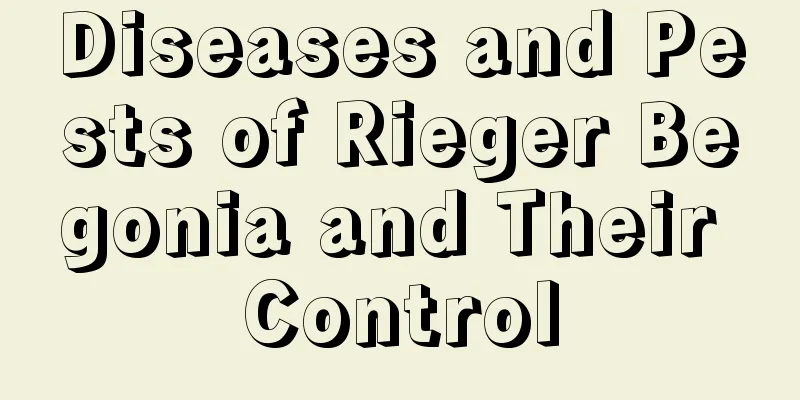Diseases and Pests of Rieger Begonia and Their Control

Diseases and their control of Rieger BegoniaLeaf spotLeaf spot diseases of Reiger Begonia are caused by bacteria or fungi. It will cause spots to appear on the leaves of Reie Begonia and cause the leaves to become necrotic. The disease will gradually expand and affect the growth of Reie Begonia. If leaf spot disease occurs in Begonia, it is difficult to treat. The best way is to do every job as well as possible in daily management and not give leaf spot disease a chance to break out. When leaf spot disease occurs, you can observe the infection condition of the plant. If the disease is mild, you can remove the infected part. If the disease is severe, you need to remove the entire plant. In addition, some high-concentration fertilizers or special pesticides can help alleviate the condition. Botrytis cinereaGray mold usually causes lesions on the leaves of Reig Begonia, and the disease can become serious. To control gray mold, you can start with climatic conditions, because temperature and humidity will affect the reproduction of gray mold spores. Keep the growing environment ventilated, lower the air humidity at night, and spray some fungicides in time for prevention. Other diseasesIn addition, Begonia may also have some other diseases, such as bacterial disease, mildew, red leaf disease, and gray spot disease, which all need to be prevented and treated properly. Pests of Rieger BegoniaPestsRieger Begonia may be harmed by pests including green flies, nematodes, thrips, aphids, red spiders, and terminal bud mites. These hazards are very serious. SolutionRegarding pest damage, you can use pesticides to spray and kill them, but it is better to reduce the use of pesticides, because although pesticides can kill insects, they will still cause pests to develop resistance and cause pesticide pollution. Using homemade insecticides is very effective. Chili water and garlic water are very effective. |
<<: Diseases and Pests of Medal Flower and Their Control
>>: Diseases of Prunus mume and their solutions
Recommend
Cultivation methods and precautions of wolfberry bonsai
Wolfberry bonsai is a hardy and easy-to-grow flow...
If you grow Clivia like this in autumn, its leaves will be shiny and the flower buds will pop up!
If you don't change the pot of Clivia, it won...
Cultivation methods and precautions of monkey face flower
How to grow monkey face flower soil To grow monke...
The difference between rose and rose
1. Differences between branches and trunks Roses ...
Cactus Pest Control Encyclopedia
Control cabbage loopers and locusts : In summer, ...
How to propagate cherry trees and what are the propagation time and methods
Cherry tree propagation method When propagating c...
How to plant gladiolus bulbs in winter
Preparation of gladiolus bulbs before planting Ch...
Is Houttuynia cordata easy to grow? How to grow it well?
1. Is it easy to raise? Houttuynia cordata has a ...
Tips for buying flower seedlings - five types of flower seedlings not to buy
Don’t buy seedlings that have just been potted Wh...
When is the best time to plant carrots?
The main edible part of a carrot is its fleshy ro...
Can children drink monk fruit soaked in water? What should they soak with it?
1. Can children drink it? If your child has sympt...
How to eat garlic and the benefits of eating garlic
1. How to eat There are many ways to eat garlic. ...
When is the best time to prune kumquat?
Kumquat pruning effect Kumquat pruning can inhibi...
When is the best time to plant watermelons in the south?
Watermelon planting time in the south The best se...
Scrape off some skin from the surface of the strawberry, throw it into the soil and rub it until it sprouts, and it will produce 100 fruits!
If you scrape the skin of a strawberry, it can ac...









